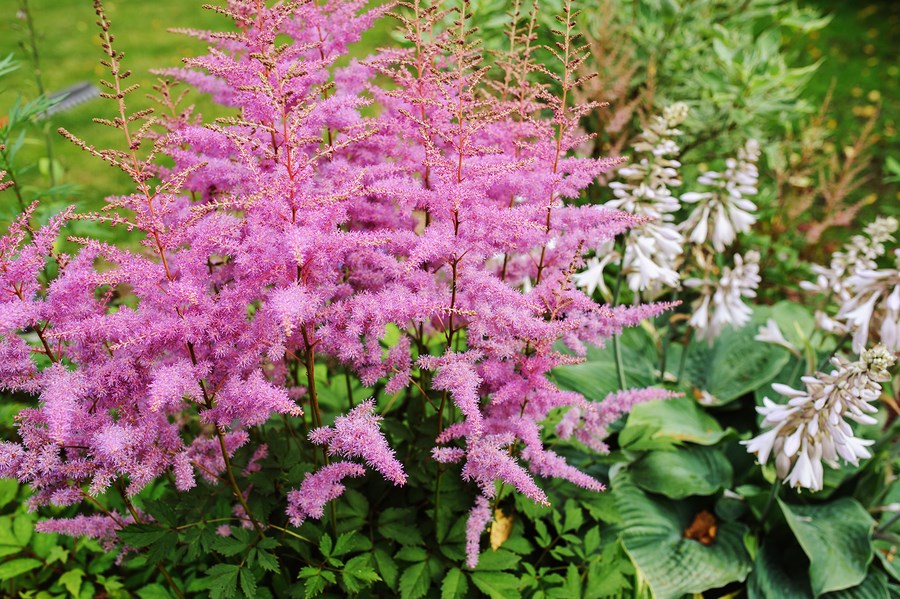Many shade gardens rely heavily on hostas, but although hostas offer a great variety of sizes, textures and variegation, they are not the only shade tolerant perennial to offer variety. Astilbe, with ferny foliage and showy flower plumes, add contrasting texture and luxurious fluffy plumes in red, pink, lavender, purple or white. The blooms are made up of innumerable tiny flowers, which create an airy look. The upright flower plumes float above ferny foliage that is quite shiny. Astilbe varieties bloom from late spring through the summer.
Astilbe is an ideal plant for a shade or woodland garden. It does enjoy some morning sun or dappled shade, but should not be in the sun during the hottest part of the day. The sun can scorch the leaves, browning the leaf margins. They will even bloom in deep shade, but with fewer plumes than in partial shade or dappled shade.
The soil needs be moisture retentive but well draining and rich in organic matter. Astilbe require consistently moist soil. The organic matter helps retain moisture but also loosens a clay soil so that there is enough drainage to prevent the roots from sitting in waterlogged soil. Roots require air as well as water – organic matter such as peat moss and compost loosen the soil to allow tiny air pockets.
This is an easy care plant. It may need dividing in four or five years, and benefits from a layer of mulch to help retain moisture and moderate soil temperature. It is not prone to common pests or diseases, and is long-lived. It appreciates an application of a balanced fertilizer in the spring.
There are hundreds of hybrids on the market. The Astilbe ardensii hybrids are the first to bloom, and the hardiest. Although they come in a variety of colours, most come in pastel shades. One exception, the hybrid Astilbe ‘Fanal’, has bright red plumes and deep red foliage. Astilbe chinensis extends the bloom season into August. There is an Astilbe for any size of garden, with cultivars ranging in size from eight inches to over three feet. Although Astilbe is usually propagated by division, the adventurous gardener can grow Astilbe from seed by following directions carefully.
Astilbe plants and roots are available at nurseries and also by mail order from seed catalogues. They deserve a spot in any garden.




